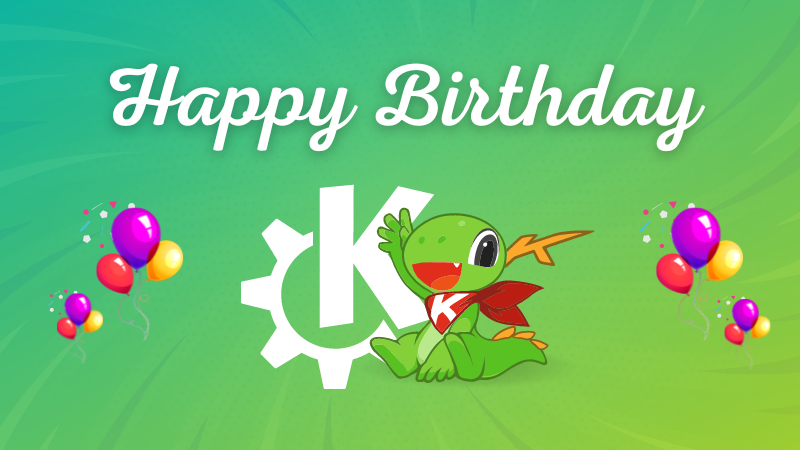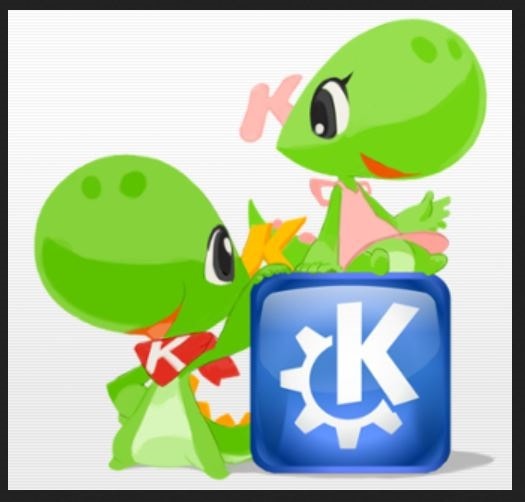Wishing a Very Happy Birthday to KDE!
Let us celebrate this moment by looking back on its glorious history with some inspiring facts on this legendary and much-loved Desktop Environment!
KDE’s Origin
26 years ago, Matthias Ettrich (a German Computer Scientist currently working at HERE) founded KDE.
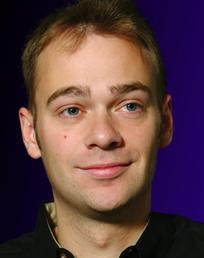
When Matthias was a student at the Eberhard Karls University of Tübingen, he was not satisfied as a Common Desktop Environment (CDE) user.
CDE is a desktop environment for Unix.
However, he wanted an interface that was more comfortable, simpler, and easy to use, with a better look and feel.
So, in 1996, Matthias Ettrich announced the Kool Desktop Environment (KDE), a GUI (graphical user interface) for Unix systems, built with Qt and C ++.
Note that the full form of KDE was an innocent pun intended to CDE at the time. You do not usually say it as “Kool Desktop Environment”, just KDE as of now. You can read the original announcement post to get a dose of nostalgia.
Trivia: The official mascot of KDE is Konqi who has a girlfriend named Katie. Previously there used to be a wizard named Kandalf but was later replaced by Konqi because many people loved and preferred the mascot to be this charming and friendly dragon!
And, here’s how it looked like with KDE mascot:
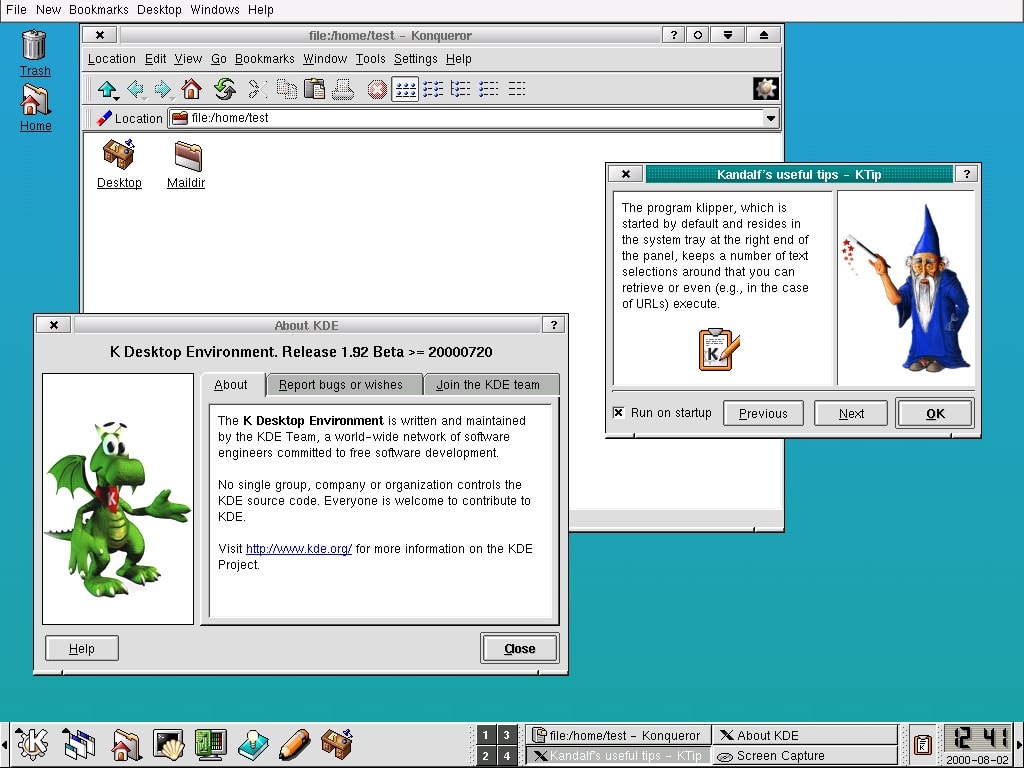
13 Interesting and Inspiring Facts on KDE
We’ve looked back into some interesting yet inspiring events that took place over the last 26 years of the KDE project:
1. Early Development Events
15 developers met in Arnsberg, Germany, in 1997, to work on the KDE project and discuss its future. This event came to be known as KDE One followed by KDE Two and KDE Three and so on in the later years. They even had one for a beta version.
2. The KDE Free Qt Foundation Agreement
The foundation agreement for the KDE Free Qt Foundation was signed by KDE e.V. and Trolltech, then owner of the Qt Foundation who ensured the permanent availability of Qt as free software.
3. First Stable Version
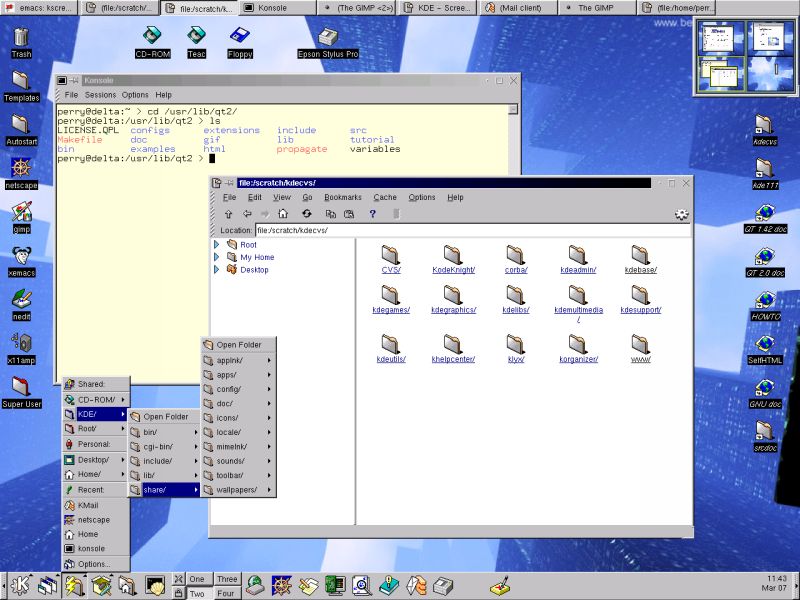
The first stable version of KDE was released in 1998, in addition to highlighting an application development framework, the KOM/OpenParts, and an office suite preview. You can check out the KDE 1.x Screenshots.
4. The KDE Women Initiative
The community women’s group, KDE Women, was created and announced in March 2001 with the primary goal to increase the number of women in free software communities, particularly in KDE.
5. 1 Million Commits
The community reached 1 million commits within a span of only 19 months, from 500,000 in January 2006 and 750,000 in December 2007, with the launch of KDE 4 at the same time.
6. Release Candidate of Development Platform Announced
A release candidate of KDE’s development platform consisting of basic libraries and tools to develop KDE applications was announced on October 2007.
7. First KDE & Qt event in India
The first conference of the KDE and Qt community in India happened in Bengaluru in March 2011 that became an annual event henceforth.
8. GCompris and KDE
In December 2014, the educational software suite GCompris joined the project incubator of KDE community (We have previously discussed GCompris, which is bundled with Escuelas Linux, a comprehensive educational distro for teachers and students).
9. KDE Slimbooks
In 2016, the KDE community partnered with a Spanish laptop retailer and announced the launch of the KDE Slimbook, an ultrabook with KDE Plasma and KDE Applications pre-installed. Slimbook offers a pre-installed version of KDE Neon and can be purchased from their website.
10. Transition to GitLab
In 2019, KDE migrated from Phabricator to GitLab to enhance the development process and let new contributors easy access to the workflow. However, KDE still uses bugzilla for tracking bugs.
11. Adopts Decentralized Matrix Protocol
KDE added Matrix bridge to the IRC channels and powered up its native chat clients using the open-source decentralized Matrix protocol in 2019.
12. KDE PinePhone
KDE developers teamed up with PINE64 in 2020 to introduce a community edition PinePhone powered by KDE.
13. Valve Picks KDE for Steam Deck
Steam Deck is undoubtedly a super trending Linux gaming console right now. And, Valve chose KDE as its desktop environment to make it work in 2021.
Today, KDE is Powered by Three Great Projects
KDE Plasma
Previously called Plasma Workspaces, KDE Plasma facilitates a unified workspace environment for running and managing applications on various devices like desktops, netbooks, tablets or even smartphones.
Currently, KDE Plasma 5.26 is the most recent version and was released some days ago. The KDE Plasma 5 project is the fifth generation of the desktop environment and is the successor to KDE Plasma 4.
KDE Applications
KDE Applications are a bundled set of applications and libraries designed by the KDE community. Most of these applications are cross-platform, though primarily made for Linux.
A very nice project in this category is a music player called Elisa focused on an optimised integration with Plasma.
KDE Development Platform
The KDE Development Platform is what significantly empowers the above two initiatives, and is a collection of libraries and software frameworks released by KDE to promote better collaboration among the community to develop KDE software.
Personal Note: It was an honour covering this article on KDE’s Birthday and I would like to take this opportunity to brief some of my personal favourite KDE based apps and distros that I have extensively used in the past and continue to.
Check out the entire timeline in detail here for a more comprehensive outline or you can take a look at this 19-year visual changes in this interesting video:
Best KDE-Based Distributions
If you have heard all the good things about KDE, you should try out the distributions powered by KDE.
We have a list of Linux distributions based on KDE, if you are curious.
Hope you liked our favourite moments in KDE history on their 26th Anniversary! Please do write about any thoughts you might have about any of your memorable experiences with KDE in the comments below.
This article was originally published in 2018, and has been edited to reflect latest information.

